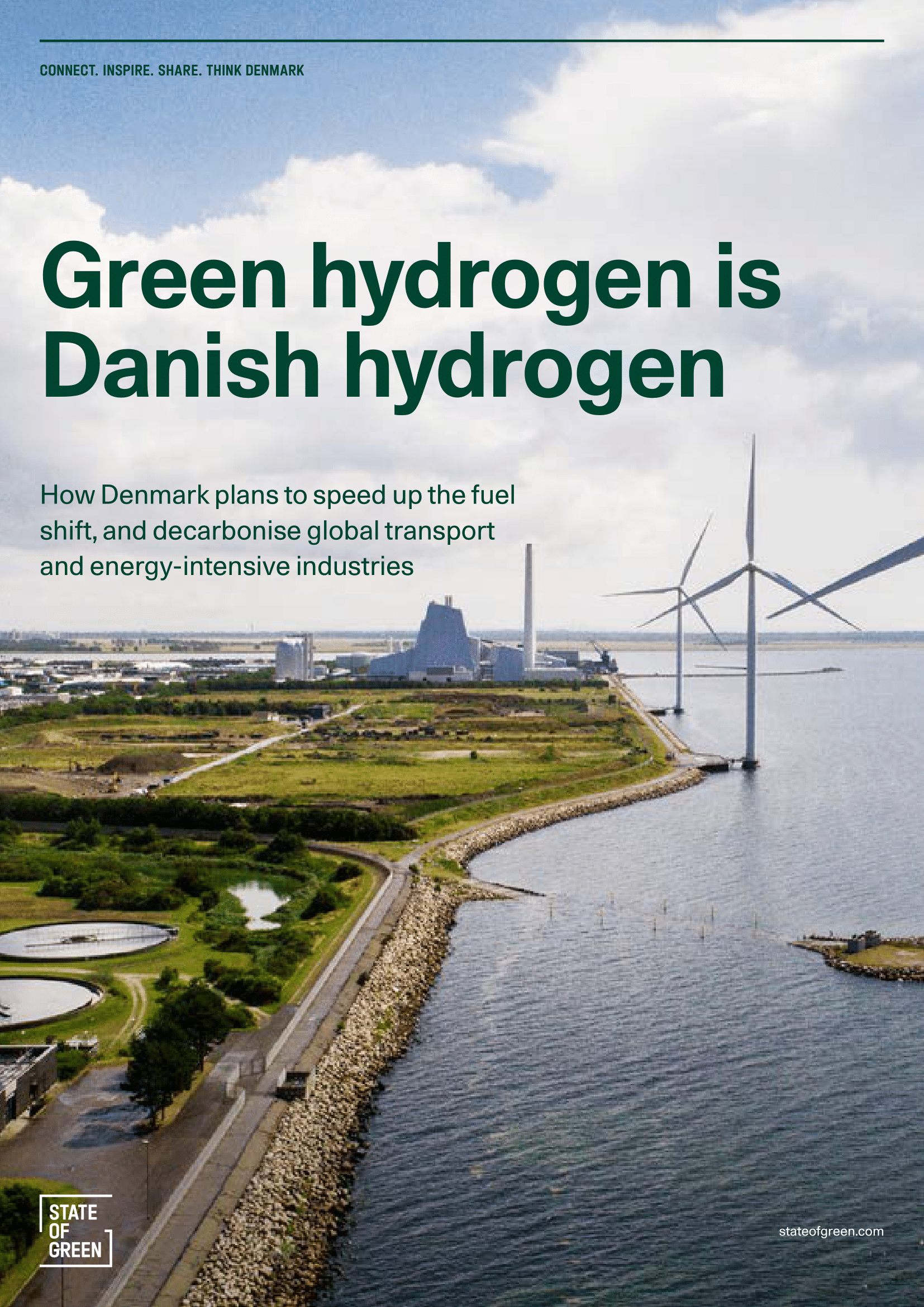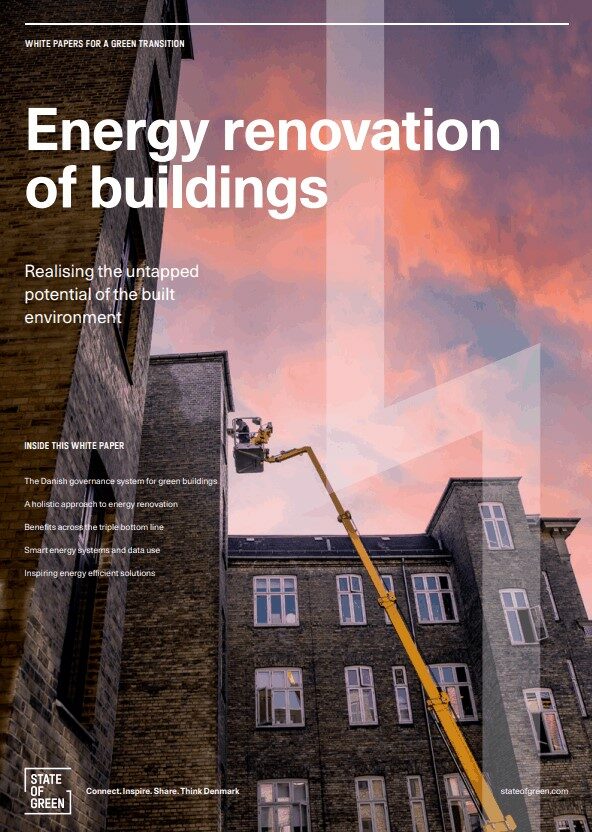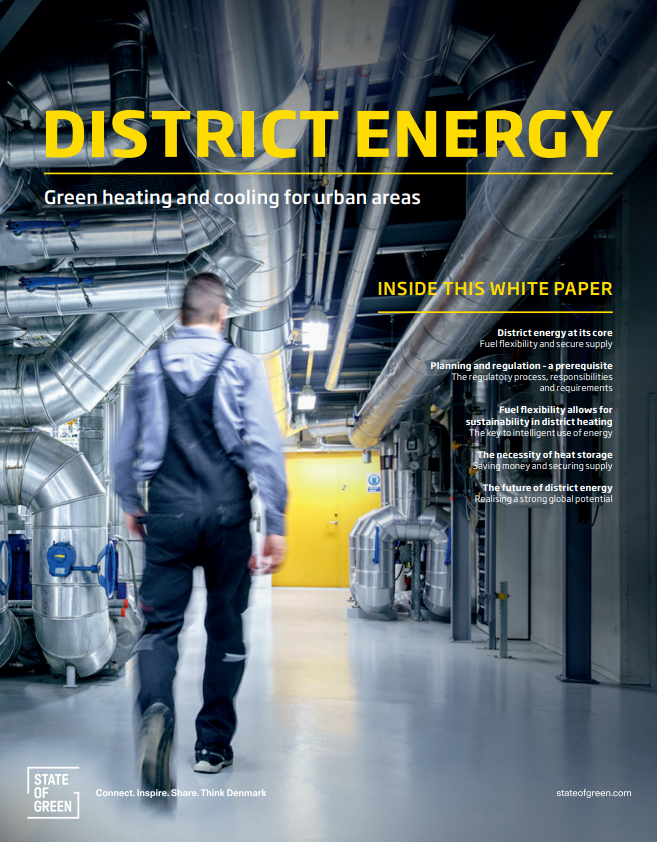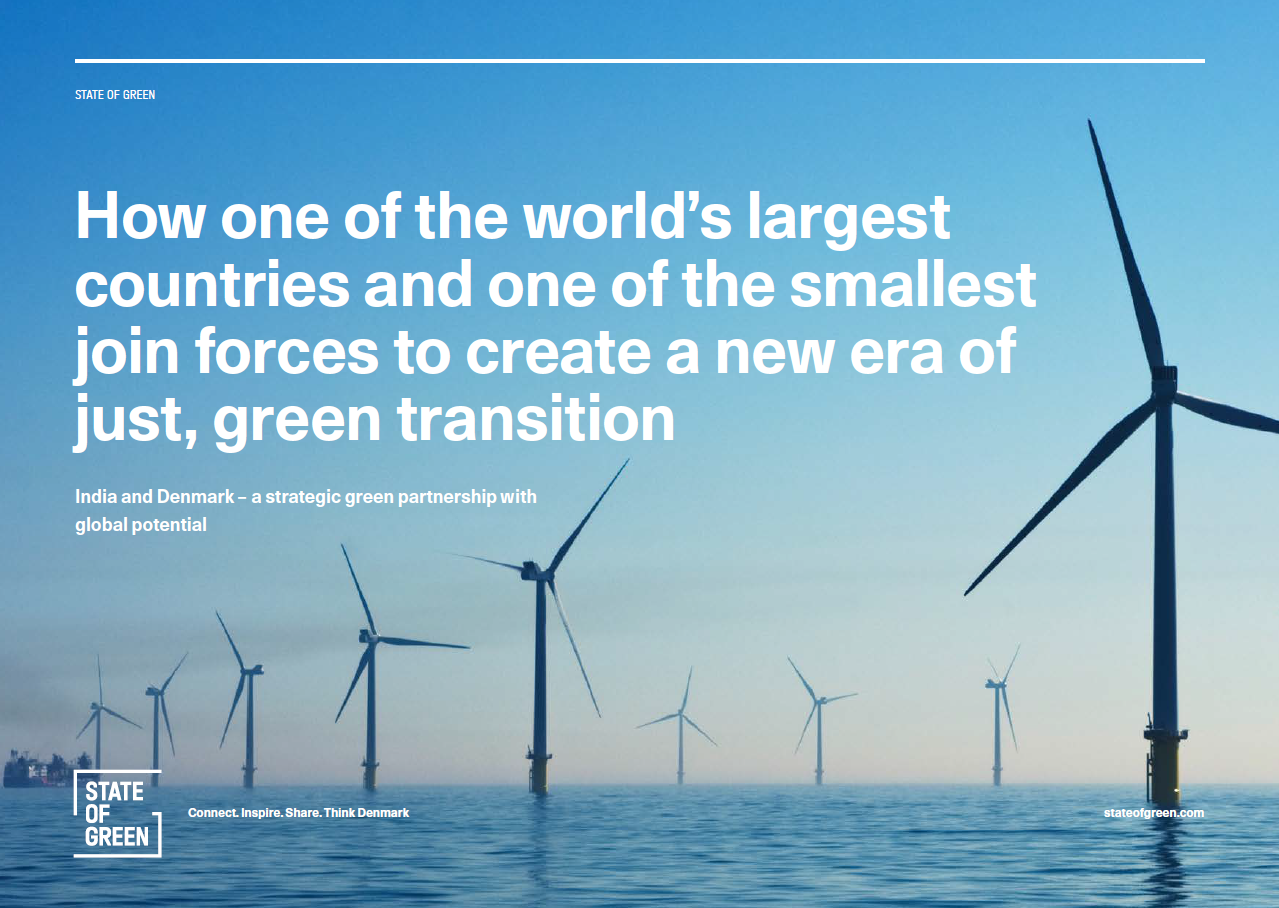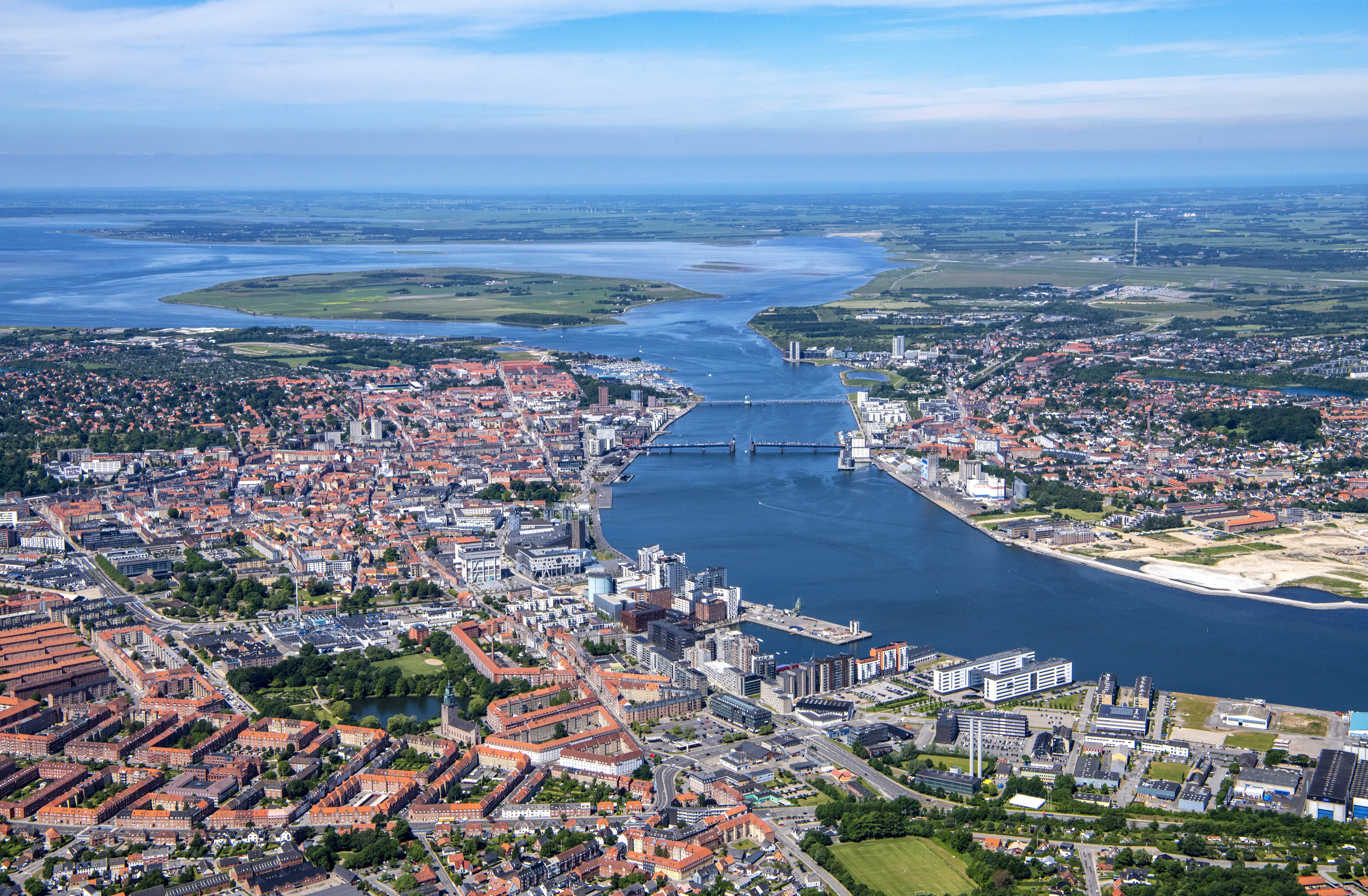Perspective
District heating
District energy
How district heating is paving the way towards Denmark’s climate goals
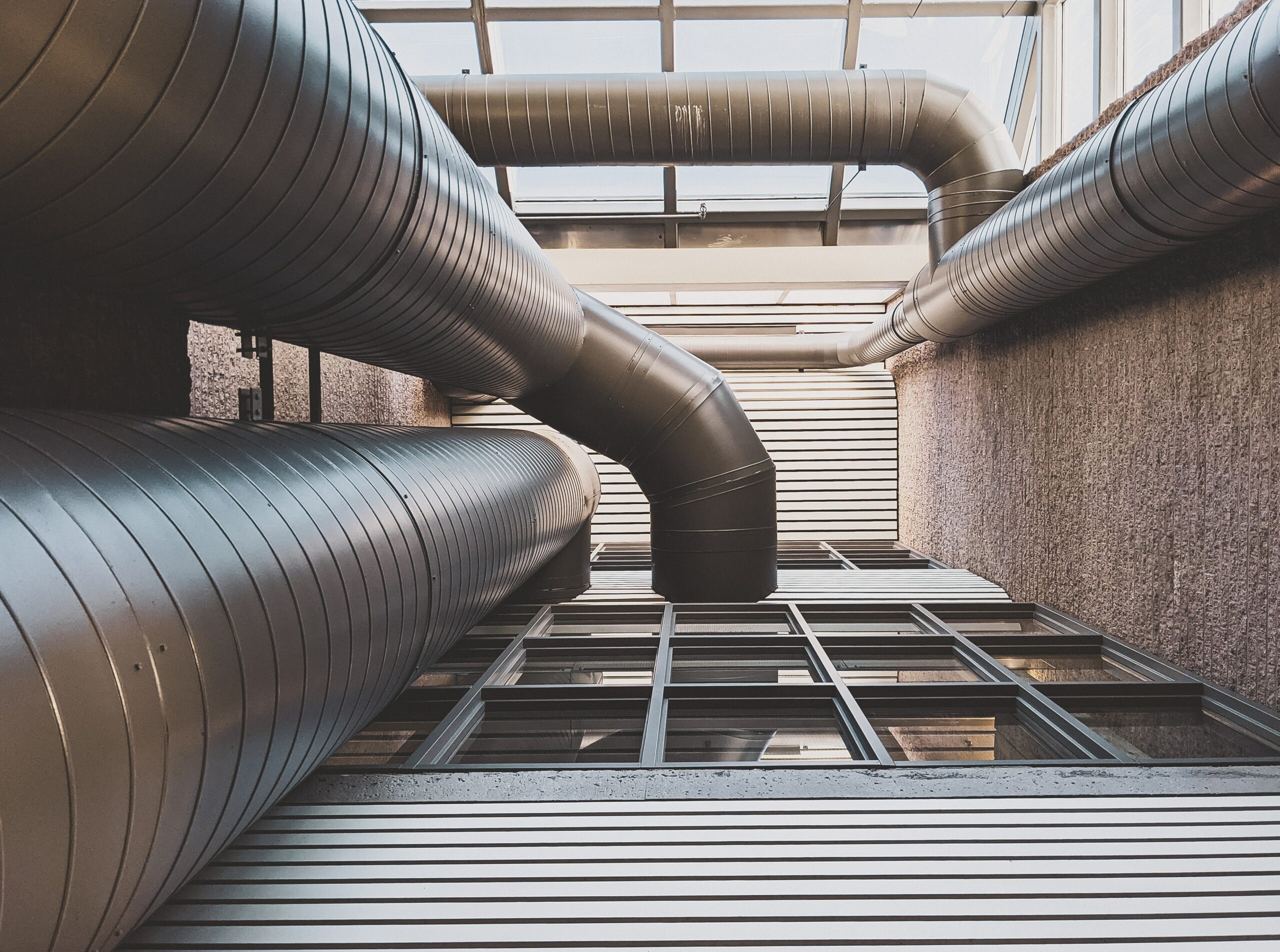

To reach these targets, the implementation of district heating and cooling throughout the country plays a central part. By moving energy in water, with a valuable temperature, from a place of production to a place of consumption, district energy can be used to secure an energy-efficient heating and cooling supply through a collective system.
District energy not only reduces carbon emissions from the heating and cooling sector, but also supports the integration of renewable energy sources, enhances energy efficiency, and ensures a reliable and sustainable energy supply. This has made district energy a linchpin in Denmark’s strategy to meet its climate goals.
Where do we come from?
The Danish journey of district heating began in 1979 with the passage of the first heat supply law. This marked the beginning of a transition that has not only changed how Danes heat and cool their homes, but has since become a global benchmark for energy solutions. Over the years, Danish stakeholders have forged a robust political framework, which facilitated the implementation of district heating and simultaneously enabled the acquisition of four decades of invaluable expertise along the way. This has spurred a number of companies specialising in cutting-edge technologies with comprehensive competencies across the entire spectrum of district energy systems’ value chains.
And the speed at which the district heating sector has developed in Denmark has been made evident by how rapidly the sector’s emissions have fallen. At the beginning of the 2010s, Denmark’s electricity and district heating sectors, excluding waste incineration, accounted for about 30-40 percent of Denmark’s total emissions of greenhouse gases. However, projections from the Danish Energy Agency suggest that by 2025, the share of emissions from the electricity and district heating sector will drop to just 3 percent, and by 2030, emissions are going to account for less than 1 percent of Denmark’s total net emissions. This is equivalent to a mere 0,1 million tonnes of CO2e.
Where is Denmark today?
In contrast to many other nations that rely on standalone heating and cooling systems, Denmark has made a strategic shift towards communal heating systems following the 1970s oil crisis. Today, energy-efficient heating and cooling solutions are deeply ingrained in the Danish mindset.
In Denmark, district heating supplies about 70 percent of the heating demand from buildings, with 35,000 new connections occurring in 2022. Denmark’s district heating system is highly energy efficient and has been one of the key drivers for reduced energy consumption and CO2 emissions from the energy sector. Roughly two-thirds of the energy used for district heating across Denmark comes from renewable energy and waste heat. The efficiency of Denmark’s district energy system rests on three core components: the distribution of heating or cooling water, the minimisation of energy loss during distribution, and the effective connection of district energy systems to consumers. Therefore, district energy not only reduces carbon emissions, but also addresses energy poverty, by lowering energy bills for consumers.
Furthermore, Danish heating production is decentralised as production is generally reliant on being in close proximity to the consumers. This creates a natural monopoly in the industry, regulated by a non-profit principle; which dictates that the price of district heating must not exceed the cost of heat production. Denmark’s district heating landscape comprises six large central heating regions around major cities, and 400 smaller decentralised district heating areas, which together offer a comprehensive and versatile heating network.
What did we learn along the way?
By 2030, there is a strong anticipation that wind energy will successfully meet 100 percent of Denmark’s electricity demands. This achievement will lead to a significant emphasis on the development of adaptable district energy systems, vital for integrating wind power into the broader energy infrastructure. Consequently, district energy not only stands as a force in realising Denmark’s climate objectives, but also plays an essential part in the orchestration of the future energy grid.
In summary, district heating safeguards that Denmark has a sound and reliable heating supply while greatly supporting its long-term energy policy targets.
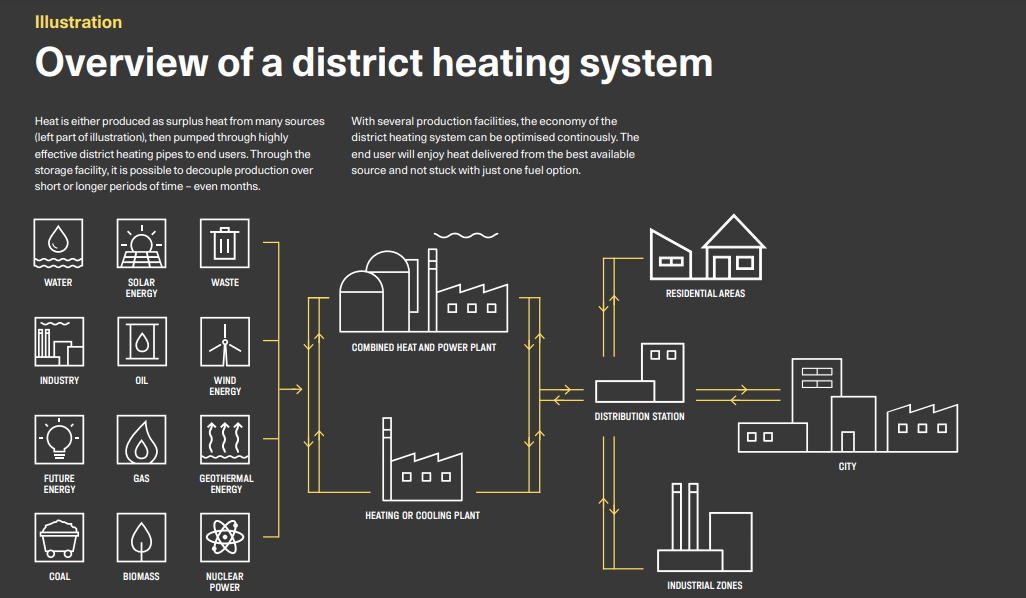
You should consider reading
publications
Combined heat and power production
+10
District Energy
1 October 2021News
Urban planning and development
+12

